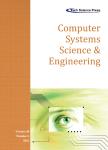An Efficient Unsupervised Learning Approach for Detecting Anomaly in Cloud
作者机构:Department of Information TechnologyKarpagam College of EngineeringCoimbatoreTamilnaduIndia Department of Computer Science and EngineeringKarpagam Academy of Higher EducationCoimbatoreTamilnaduIndia Department of Computer Science and EngineeringKoneru Lakshmaiah Education FoundationAndhra PradeshIndia Department of MCACMR Institute of TechnologyBengaluruKarnatakaIndia Department of Computer Science and EngineeringPrasad V.Potluri Siddhartha Institute of TechnologyAndhra PradeshIndia Department of Computer Science and EngineeringResidency CollegeChennaiIndia
出 版 物:《Computer Systems Science & Engineering》 (计算机系统科学与工程(英文))
年 卷 期:2023年第45卷第4期
页 面:149-166页
核心收录:
学科分类:08[工学] 0812[工学-计算机科学与技术(可授工学、理学学位)]
主 题:Network intrusion detection system feature selection auto-encoder support vector machine(SVM) anomaly
摘 要:The Cloud system shows its growing functionalities in various industrial *** safety towards data transfer seems to be a threat where Network Intrusion Detection System(NIDS)is measured as an essential element to fulfill ***,Machine Learning(ML)approaches have been used for the construction of intellectual *** IDS are based on ML techniques either as unsupervised or *** supervised learning,NIDS is based on labeled data where it reduces the efficiency of the reduced model to identify attack ***,the unsupervised model fails to provide a satisfactory ***,to boost the functionality of unsupervised learning,an effectual auto-encoder is applied for feature selection to select good ***,the Naïve Bayes classifier is used for classification *** approach exposes the finest generalization ability to train the *** unlabelled data is also used for adoption towards data ***,redundant and noisy samples over the dataset are *** validate the robustness and efficiency of NIDS,the anticipated model is tested over the NSL-KDD *** experimental outcomes demonstrate that the anticipated approach attains superior accuracy with 93%,which is higher compared to J48,AB tree,Random Forest(RF),Regression Tree(RT),Multi-Layer Perceptrons(MLP),Support Vector Machine(SVM),and ***,False Alarm Rate(FAR)and True Positive Rate(TPR)of Naive Bayes(NB)is 0.3 and 0.99,*** compared to prevailing techniques,the anticipated approach also delivers promising outcomes.



